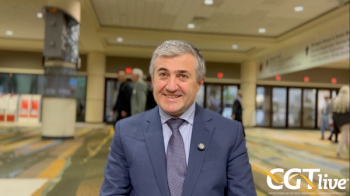
Dr. Sehgal on the Structure and Manufacturing Process of CAR T Cells
Alison Rager Sehgal, MD, assistant professor of medicine, University of Pittsburgh School of Medicine, UPMC Hillman Cancer Center, discusses the structure and manufacturing process of CAR T cells.
Alison Rager Sehgal, MD, assistant professor of medicine, University of Pittsburgh School of Medicine, UPMC Hillman Cancer Center, discusses the structure and manufacturing process of CAR T cells.
There are three structural parts to a CAR T cell: the ligand which binds to the target on the surface of the B-cell lymphoma, the transmembrane domain, and stimulatory molecules, says Sehgal. Two aspects go into the stimulatory molecules, including CD3 zeta, which is part of the T-cell receptor as well as a costimulatory domain, which can vary between the CD28 and 4-1BB products, she adds.
Regarding the manufacturing process, eligible patients will undergo 1 day of leukapheresis so that their T cells can be collected. Patients do not have to undergo mobilization ahead of time, which differs from the protocol for stem cell transplant. After the T cells have been collected, they are sent to the manufacturing center for a time period of approximately 2 to 4 weeks, explains Sehgal. Once the T cells have been grown sufficiently, the patient comes in to the hospital and receives 3 days of chemotherapy prior to receiving their transfusion anywhere from 2 to 7 days later.
Newsletter
Stay at the forefront of cutting-edge science with CGT—your direct line to expert insights, breakthrough data, and real-time coverage of the latest advancements in cell and gene therapy.

















































